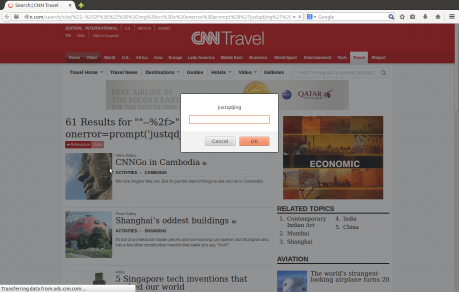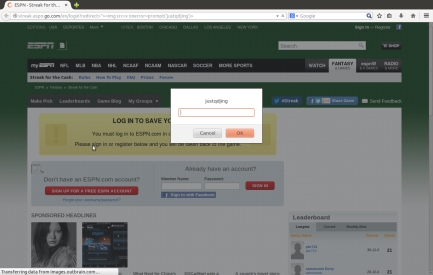Tags
0day Bug, Code Flaw, Computer Science, crime prevention, CRLF, cyber-intelligence, exploit, Hacking Attack, HTTP Response Splitting, Internet Testing, IT News, NetCat CMS, OSVDB 119342, OSVDB 119343, Vulnerabilities, Web Security, whitehat
OSVDB 119342, 119323 NetCat CMS Multiple HTTP Response Splitting (CRLF) Web Security Vulnerabilities
Exploit Title: NetCat CMS Multiple CRLF Security Vulnerabilities
Product: NetCat CMS (Content Management System)
Vendor: NetCat
Vulnerable Versions: 5.01 3.12 3.0 2.4 2.3 2.2 2.1 2.0 1.1
Tested Version: 3.12
Advisory Publication: March 07, 2015
Latest Update: March 07, 2015
Vulnerability Type: Improper Neutralization of CRLF Sequences (‘CRLF Injection’) [CWE-93]
CVE Reference: *
OSVDB Reference: 119342, 119343
Impact CVSS Severity (version 2.0):
CVSS v2 Base Score: 4.3 (MEDIUM) (AV:N/AC:M/Au:N/C:N/I:P/A:N) (legend)
Impact Subscore: 2.9
Exploitability Subscore: 8.6
CVSS Version 2 Metrics:
Access Vector: Network exploitable; Victim must voluntarily interact with attack mechanism
Access Complexity: Medium
Authentication: Not required to exploit
Impact Type: Allows unauthorized modification
Discover and Author: Jing Wang, Division of Mathematical Sciences (MAS), School of Physical and Mathematical Sciences (SPMS), Nanyang Technological University (NTU), Singapore. (@justqdjing)
Advisory Details:
(1) Vendor & Product Description:
Vendor:
NetCat
Product & Version:
NetCat
5.01 3.12 3.0 2.4 2.3 2.2 2.1 2.0 1.1
Vendor URL & Download:
NetCat can be got from here,
Product Introduction:
NetCat.ru is russian local company. “NetCat designed to create an absolute majority of the types of sites: from simple “business card” with a minimum content to complex web-based systems, from corporate offices to online stores, libraries or media data – in other words, projects completely different directions and at any level of complexity. View examples of sites running on NetCat CMS can be in a special section.”
“Manage the site on the basis of NetCat can even inexperienced user, because it does not require knowledge of Internet technologies, programming and markup languages. NetCat constantly improving, adds new features. In the process of finalizing necessarily take into account the wishes of our partners and clients, as well as trends in Internet development. More than 2,000 studios and private web developers have chosen for their projects is NetCat, and in 2013 sites, successfully working on our CMS, created more than 18,000.”
(2) Vulnerability Details:
NetCat web application has a computer security bug problem. It can be exploited by HTTP Response Splitting (CRLF) attacks. This could allow a remote attacker to insert arbitrary HTTP headers, which are included in a response sent to the server. If an application does not properly filter such a request, it could be used to inject additional headers that manipulate cookies, authentication status, or more.
(2.1) The first code flaw occurs at “/post.php” page with “redirect_url” parameter by adding “%0d%0a%20”.
(2.2) The second code flaw occurs at “redirect.php?” page with “url” parameter by adding “%0d%0a%20”.
Reference:
http://www.osvdb.org/show/osvdb/119342
http://www.osvdb.org/show/osvdb/119343
http://lists.openwall.net/full-disclosure/2015/03/07/3
http://seclists.org/fulldisclosure/2015/Mar/36
http://marc.info/?l=full-disclosure&m=142576233403004&w=4
https://www.mail-archive.com/fulldisclosure%40seclists.org/msg01768.html
http://permalink.gmane.org/gmane.comp.security.fulldisclosure/1676
http://securityrelated.blogspot.com/2015/03/netcat-cms-multiple-http-response.html
http://essayjeans.blog.163.com/blog/static/23717307420155142423197/
http://computerobsess.blogspot.com/2015/06/osvdb-119342-netcat-crlf.html
http://diebiyi.com/articles/bugs/netcat-cms-crlf
http://tetraph.blog.163.com/blog/static/234603051201551423749286/
https://webtechwire.wordpress.com/2015/03/14/osvdb-119342-netcat-crlf/
https://itswift.wordpress.com/2015/03/07/netcat-cms-multiple
http://tetraph.com/security/http-response-splitting-vulnerability/netcat-cms-multiple
http://www.inzeed.com/kaleidoscope/computer-web-security/netcat-cms













